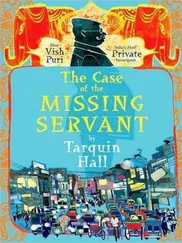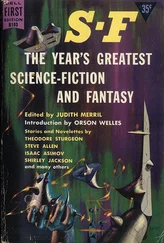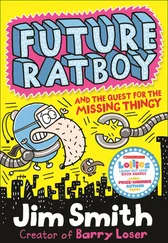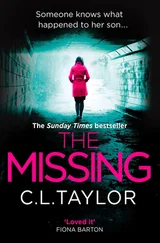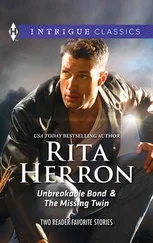It was like going inside of a smell. A smell of ammonia and rot that was too strong for me to breathe. I had to cover my nose. It was the smell of bats. I stood up in the darkness. I groped for a wall, and my hand collided with something made of tin.
“What’s wrong?” asked Luis, still crawling through the door.
“Nothing. But be careful, there are some metal things here.”
As my eyes grew used to the gloom I saw we were in a larder. Light filtered in through the hole we had made. We opened a tall door and stepped into a corridor, where the air was more breathable but where we were still surrounded by the dank cold of winter. We edged forward. There were doors on either side, all of them shut. We couldn’t see anything at the far end of the corridor. We reached a corner. At first we thought the corridor must be L-shaped, then a U, until finally we discovered it was a square, because we found ourselves back at the door where we first started. This time we began opening some of the doors on the right. We saw a kitchen with pots and pans hanging from the wall, some big rooms with rugs and porcelain ornaments, an office, three bathrooms. We opened a door on the interior of the corridor, but couldn’t see anything.
“What’s there?” Luis asked.
“It’s dark,” I said, and from the echo we realized it must be a very large space.
We went in. We couldn’t see properly, so Luis lit his lighter. By its timid flame we made out some armchairs, a dining room and, behind our backs, an animal on its hind legs staring at us. A giant rat, the size of a small pig. We crept away from it.
“What is it?”
I stood stock still, and didn’t say a word.
“Shoo!” said Luis, “get out!” He stamped his foot to scare it off, but it didn’t budge.
I laughed nervously because I had just realized it was a stuffed capybara. The lighter’s flickering flame had made it look alive and breathing. Luis touched it with his foot: it gave off a hollow sound. Holding the light high above our heads, we looked all around us; it was an enormous place that had once served as both a living and dining room. When we had recovered from our fright, I went out and started opening doors.
“What are you doing?” asked Luis, with a sort of strangled cry.
I didn’t reply; I wanted to let in more light. I walked the whole length of the corridor, opening the doors on both sides. Daylight streamed in from the exterior-facing rooms and reached the boxed-in space. I was about to complete my tour when I heard my brother say something. I went back into the big central room and saw him staring upwards. I looked in the direction he was gazing, but at first couldn’t make anything out. Eventually I saw there was something in between the ceiling and the tops of the doors; a series of shapes, a kind of frieze decorating the walls all around the room. It was Salvatierra’s canvas. There it was. Even though the sunlight only reached us dimly, we could see horses, the outlines of human beings. An immense relief swept over me: this was the bridge, the link that was going to fill the gap that so upset me in my father’s work. At last I would have the weight of that interruption lifted from me. I felt the pleasure that comes when something is finally complete and becomes fluid, continuous.
“We have to get it down,” I said, and we set to work at once.
We had to construct scaffolding from pieces of furniture. At the bottom we put the long dining table. On top of that, we built two columns: one using a sideboard, the other using two small tables and a chair. I let Luis climb onto the sideboard because with his weight he needed the more stable one. We discovered that the canvas was attached with studs to long boards. We tried to pull the planks off the wall, but it proved impossible. We had no tools. I looked in the kitchen for something we could use, and took some knives. In the end, what turned out to be most useful were the bases of some steel candlesticks that fit underneath the studs and allowed us to pry them out. But it was a lot of work. Every so often we thought it would be better to leave it to the following day, telling ourselves we could come back with proper tools and stepladders, but after a break we always went back to it.
We saw a fragment of the canvas that depicted a horse race. There were the mounts, nervous before the start, tense, reined in, rearing, and yet delicate-looking, like furious beasts elegantly poised on the tips of their hooves. Then the start itself, when their coats seemed to leap out of the painting. A brilliant chestnut, a golden colored bay, a fiery roan, a dapple-gray gleaming white in the sun. All of them exploding from the gate like springs, enormous and threatening as bison in cave paintings, their diminutive riders clinging to their backs, completely unable to control this unleashed power.
Whenever we had managed to unhook five meters or so, we had to move our makeshift scaffolding. It was exhausting. Even though we took great care, it seemed as though the noise we made shifting the furniture could be heard for kilometers around. We spent the whole afternoon like this. I was starting to get blisters on my hands, and our shoulders and necks began to seize up from having to keep our arms above our heads the whole time. At one point I left to look for some water to drink. I went to the kitchen but couldn’t find any. The supply to the house had been cut off.
We tried to get the studs out by pulling together on the canvas, but this only ripped it, so we were forced to remove them one by one. We would slide the candlestick in, press down, and the stud would fly out, landing noisily on the floor tiles. We kept going. We reached a part of the canvas showing a woman with light colored eyes who looked familiar to me. Asking Luis for his lighter, I brought the flame up close to the canvas, and then I realized:
“This woman was a colleague of dad’s at the Post Office.”
“Are you sure?”
“Yes,” I said, “I’m sure.”
It was Eugenia Rocamora, painted from memory, smoking naked in the bed of some secret bedroom in Barrancales. The siesta-hour sun splintered on the shutter and fell on her youthful hip.
“I met her the other day. She’s the woman I told you about who showed me around.”
There were more images of Eugenia Rocamora. Although her face wasn’t always visible, it was clearly her: sometimes she was asleep, her long auburn hair spilling over the sheets; at others she was reading a book, lying naked in a white light that poured into interconnecting rooms: even if it was the same one repeated from different angles, Salvatierra had painted them as if they comprised a single house with many rooms in it, the long house of siestas he had spent with that woman.
I think we were both taken aback, because neither of us had the slightest suspicion of this romance. I suppose mom knew nothing about it either. Or perhaps she did, and had made sure to put an end to it. There could be no doubt that Salvatierra had had a relationship with Eugenia Rocamora, most likely in 1961, the year this roll was painted. It didn’t appear to be something he had imagined, but rather scenes painted soon afterwards, day by day, like a siesta diary. There was no way we could be sure. It gave the impression of having been a brief relationship, a series of encounters, possibly for a month, who knows, or it might have lasted a year and Salvatierra had later reduced it in his memory. It seemed a short, impossible, intense relationship, like a flash of lightning streaking across his canvas. At some point they must have decided to separate. It couldn’t last. She was about twenty-five, and he was fifty-two, and married. That was too much of a scandal for a small town.
As we freed the canvas, it began to topple onto us. At a certain moment, the figure of the naked woman appeared to be falling right on to Luis, who was tired, fed up, and not particularly pleased at the revelation of dad’s infidelity.
Читать дальше



